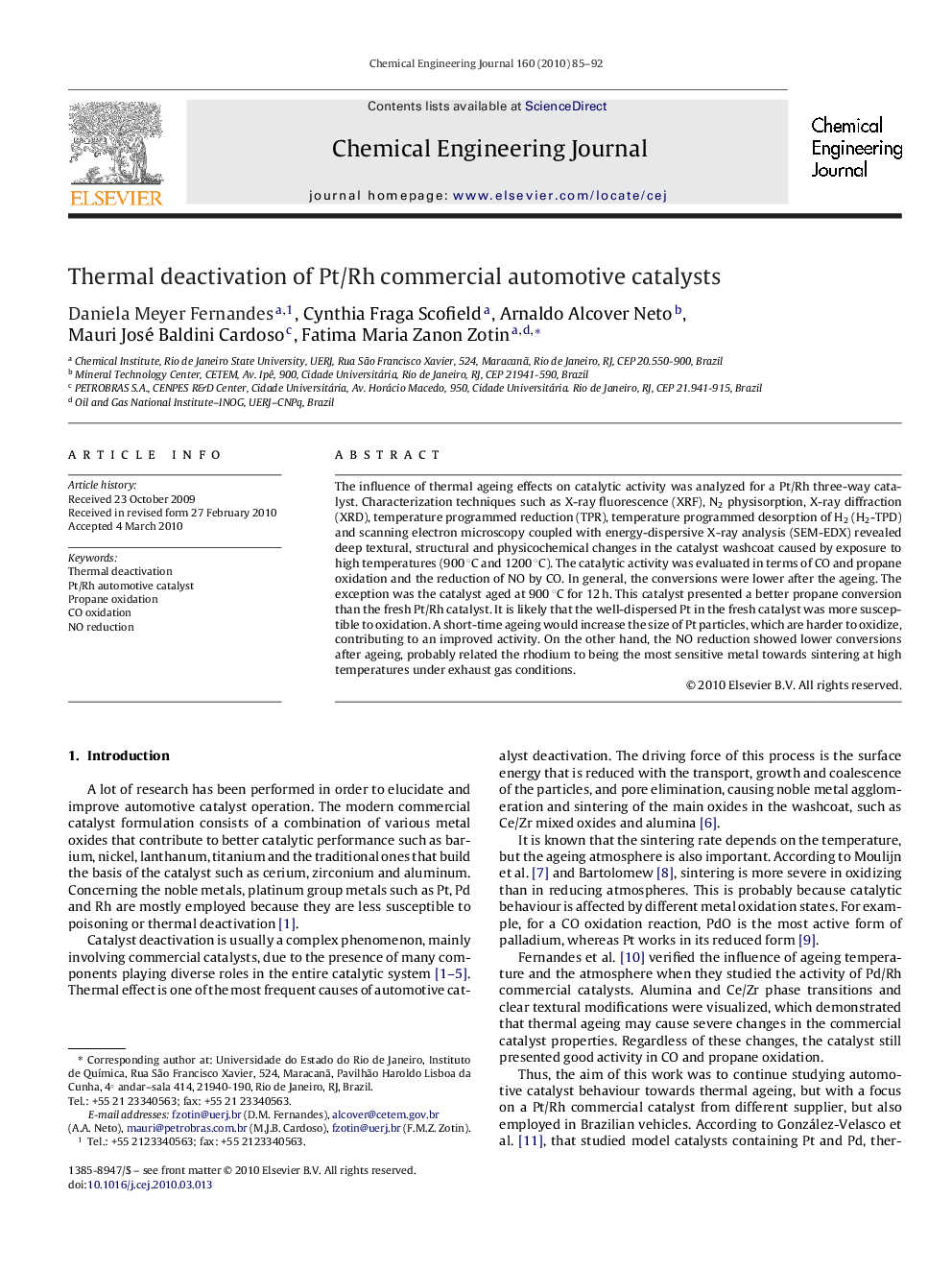| Article ID | Journal | Published Year | Pages | File Type |
|---|---|---|---|---|
| 151827 | Chemical Engineering Journal | 2010 | 8 Pages |
The influence of thermal ageing effects on catalytic activity was analyzed for a Pt/Rh three-way catalyst. Characterization techniques such as X-ray fluorescence (XRF), N2 physisorption, X-ray diffraction (XRD), temperature programmed reduction (TPR), temperature programmed desorption of H2 (H2-TPD) and scanning electron microscopy coupled with energy-dispersive X-ray analysis (SEM-EDX) revealed deep textural, structural and physicochemical changes in the catalyst washcoat caused by exposure to high temperatures (900 °C and 1200 °C). The catalytic activity was evaluated in terms of CO and propane oxidation and the reduction of NO by CO. In general, the conversions were lower after the ageing. The exception was the catalyst aged at 900 °C for 12 h. This catalyst presented a better propane conversion than the fresh Pt/Rh catalyst. It is likely that the well-dispersed Pt in the fresh catalyst was more susceptible to oxidation. A short-time ageing would increase the size of Pt particles, which are harder to oxidize, contributing to an improved activity. On the other hand, the NO reduction showed lower conversions after ageing, probably related the rhodium to being the most sensitive metal towards sintering at high temperatures under exhaust gas conditions.
